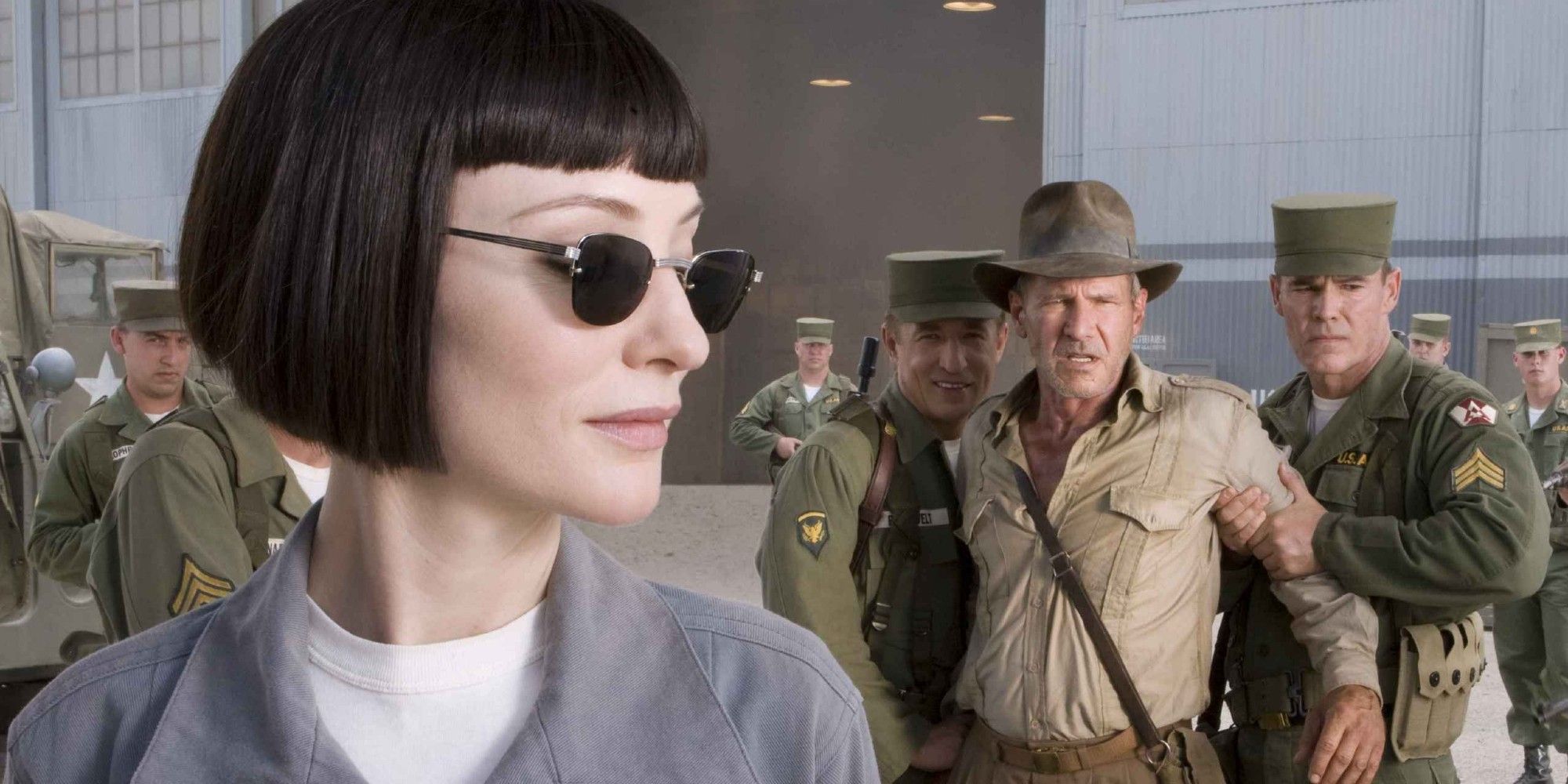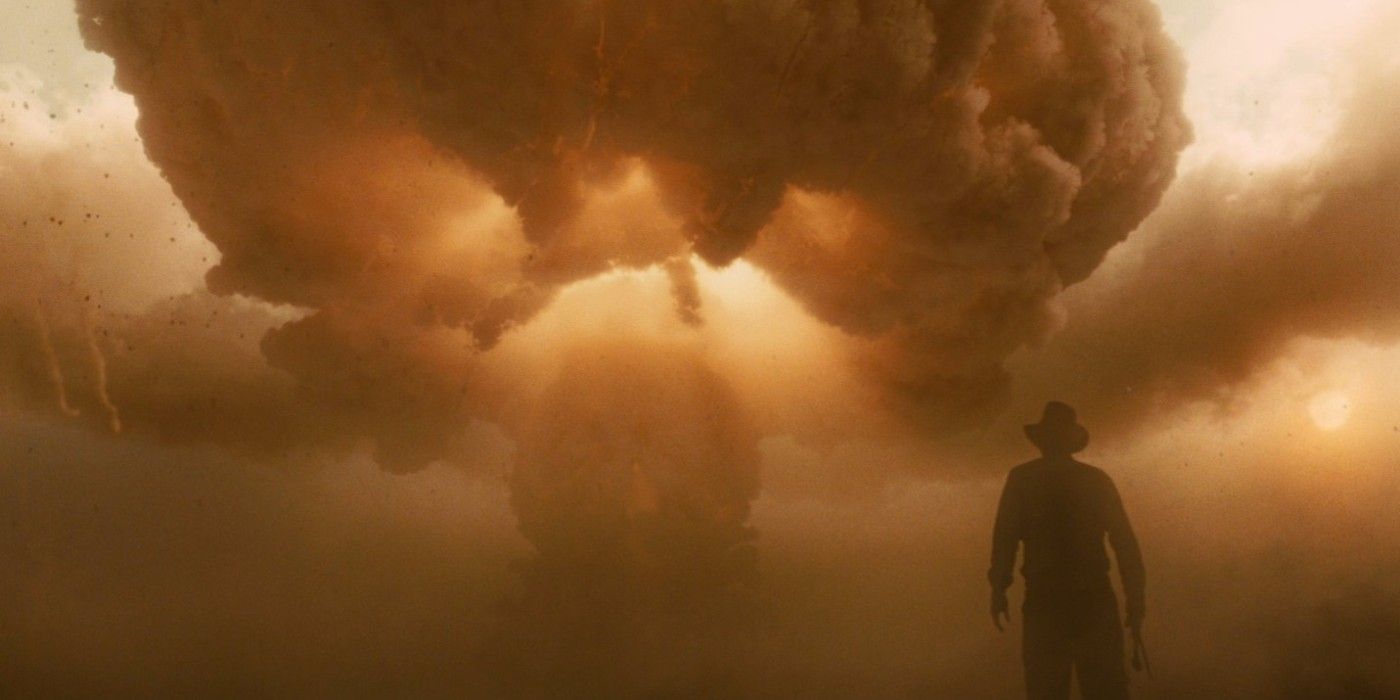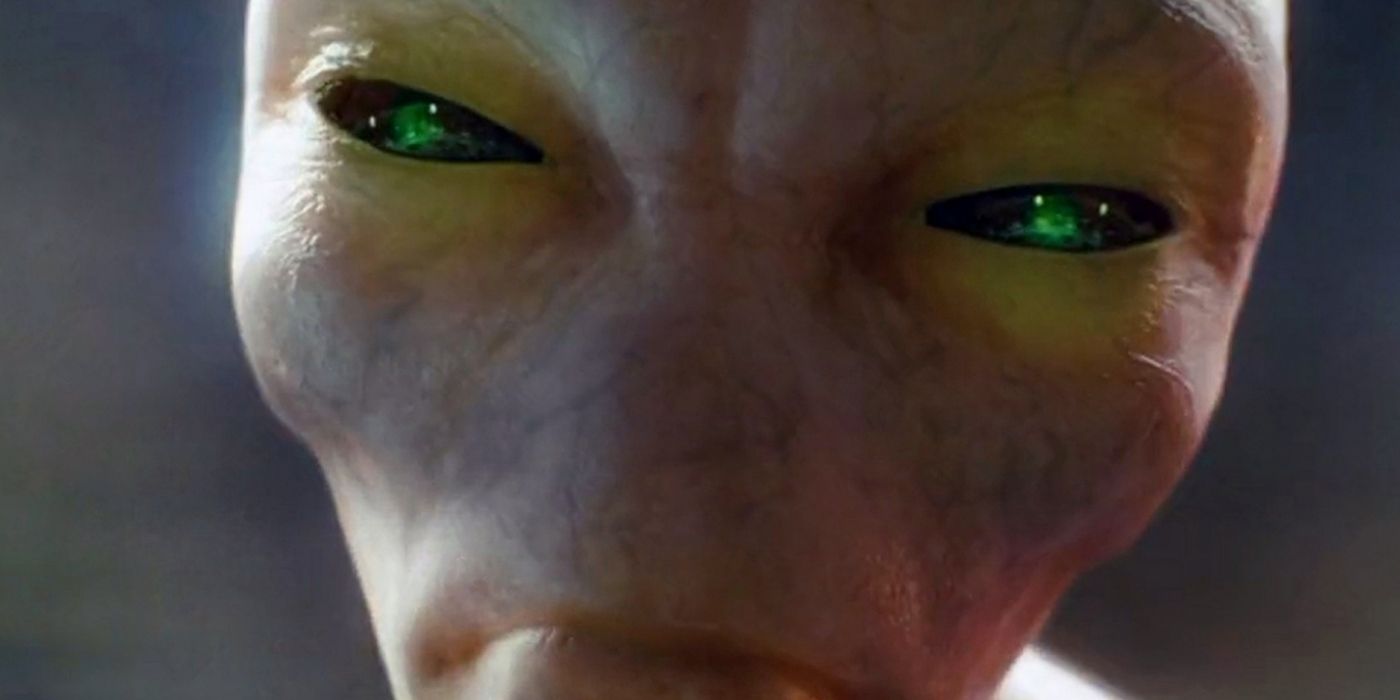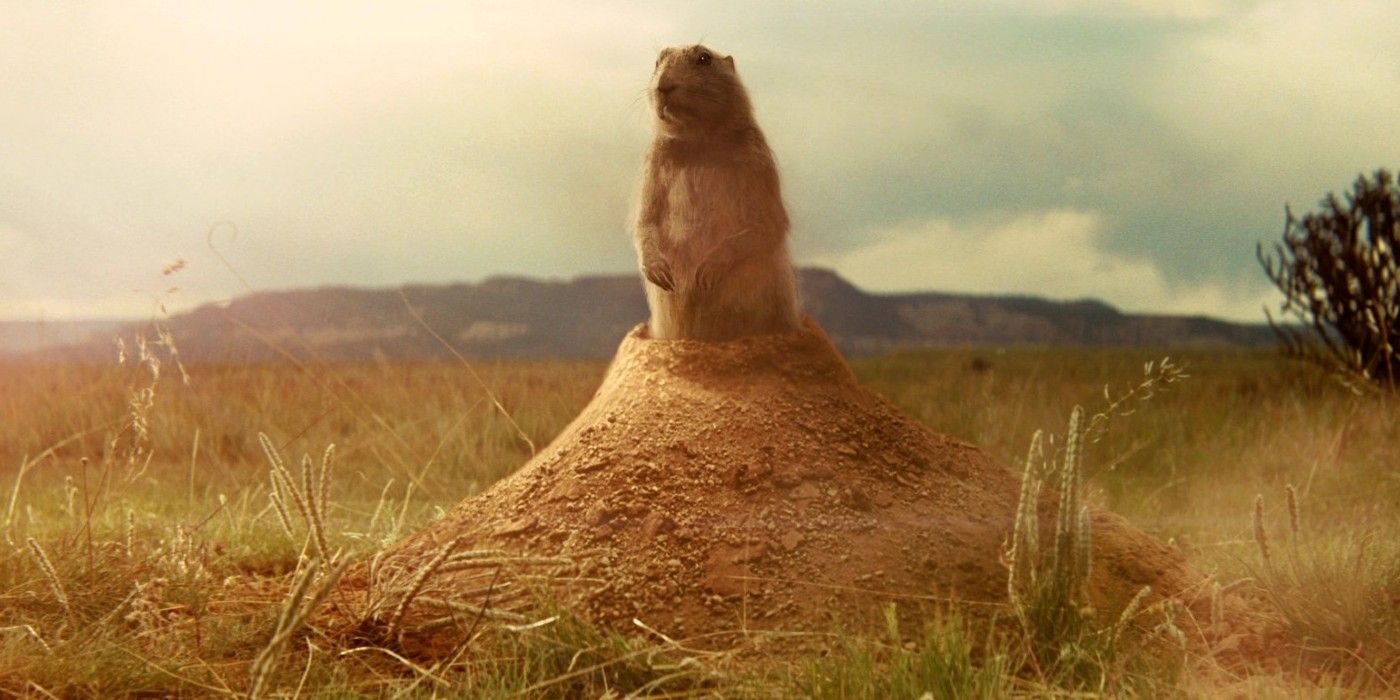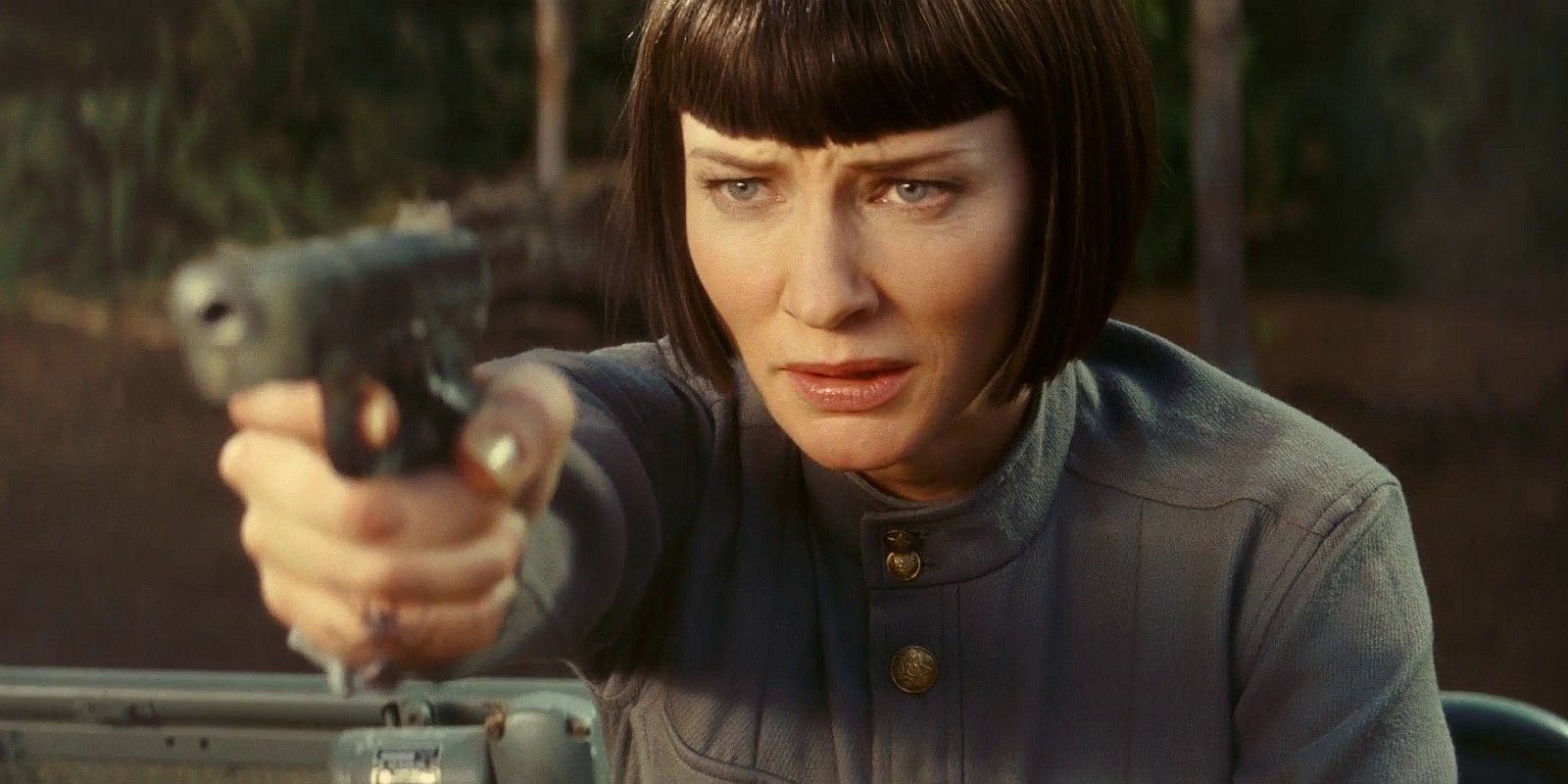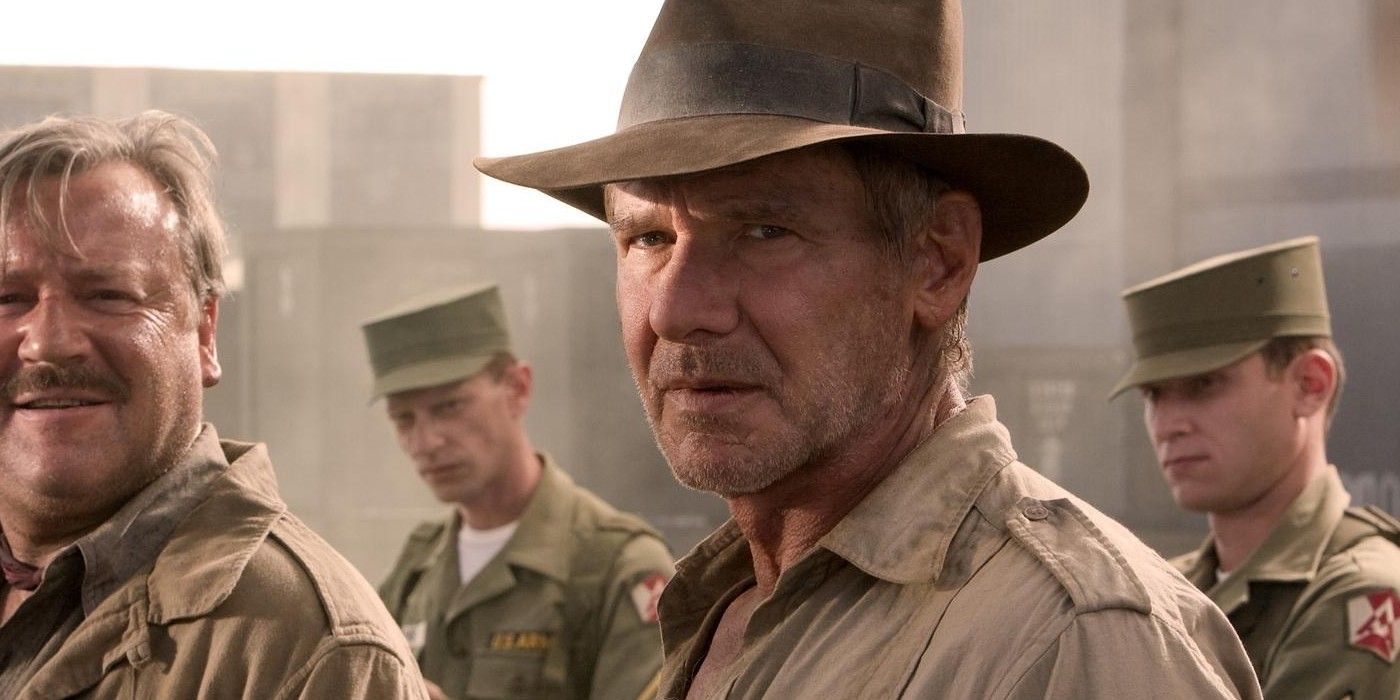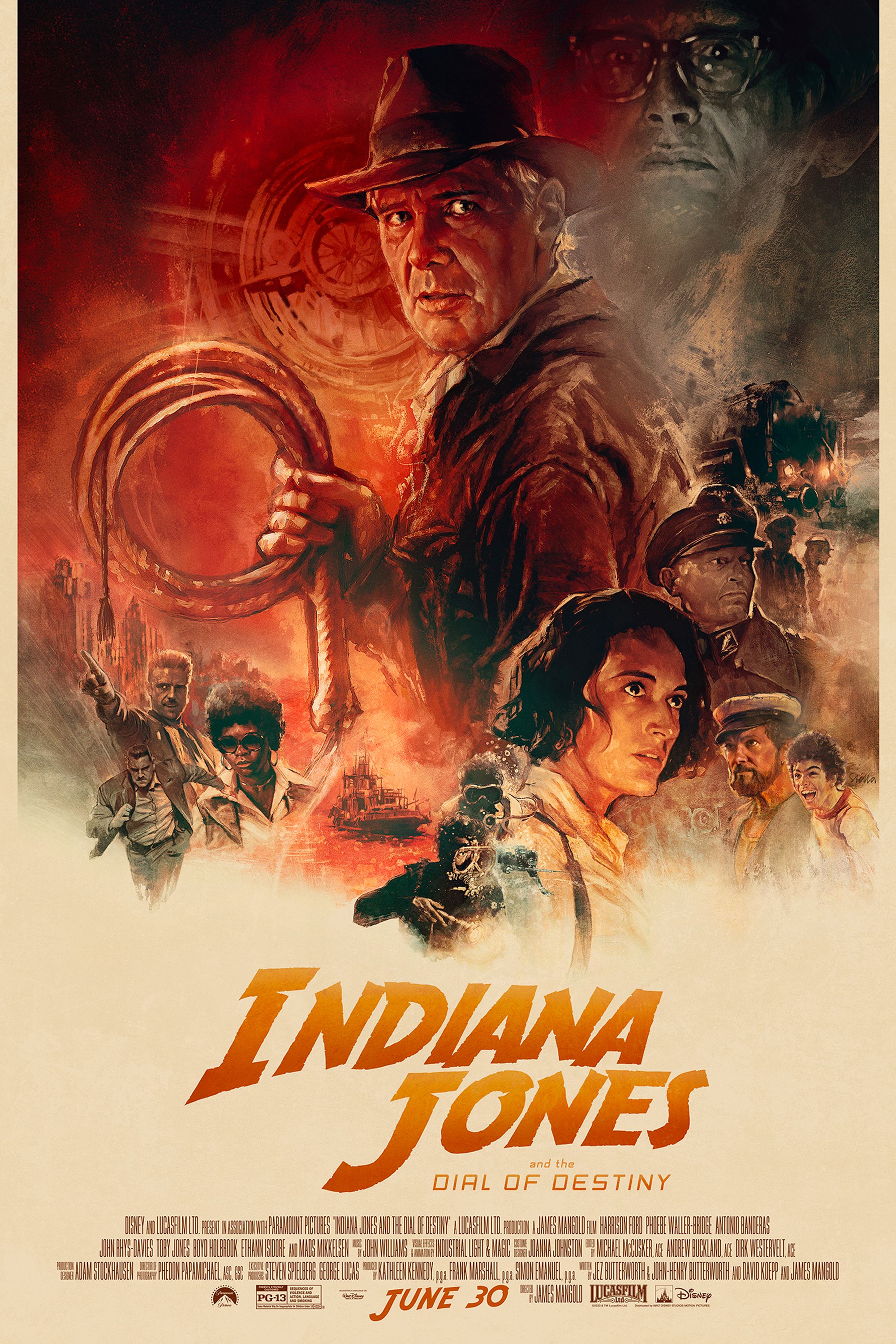Here's everything that went wrong with Indiana Jones and the Kingdom of the Crystal Skull. When 1989's Indiana Jones and the Last Crusade ended with Indy and his comrades literally riding off into the sunset, many filmgoers fairly assumed that would be the last time Harrison Ford's famed archaeologist and adventurer would grace the big screen. Finally, after nineteen years of rumors and false starts and stops, that changed in 2008, as original director Steven Spielberg and co-writer George Lucas reunited with Ford for a fourth installment in the series, titled Kingdom of the Crystal Skull.
In addition to being a box office hit (grossing $790.6 million against a $180 million budget), Crystal Skull was generally well-received by critics upon its initial release. Most agreed it didn't reinvent the wheel (nor did all the updated elements work), but it got the job done and delivered what they expected from a franchise inspired by the pulpy serial adventure films of the 1930s and '40s. Casual moviegoers, on the other hand, were less forgiving, and Crystal Skull has found its way onto multiple worst (or, failing that, most disappointing) sequels lists in the twelve years since then.
Looking back from the present, the problems with Indiana Jones and the Kingdom of the Crystal Skull have only grown more obvious with time. But before we get into the broader issues, let's take a look at one particularly infamous scene that more or less encompasses what's off about the film overall.
The Nuke The Fridge Scene Was A Mistake
The Indiana Jones films have always included over the top moments (a la the heart-ripping sequence in Temple of Doom) and goofy action is inherent to the franchise's origins in pulp entertainment. Of course, any series can take things too far, and that's exactly what happened in a scene early on in Crystal Skull, where Indy accidentally stumbles upon an atomic bomb testing site in Nevada and barely manages to survive the ensuing nuclear explosion by taking shelter inside a lead-lined refrigerator. Besides being a little too cartoonish even for an Indy movie, the sequence is tonally at odds with itself and attempts to express the horror of nuclear weaponry while simultaneously playing out like a live-action Wile E. Coyote short. The scene's attempt to infuse the Indiana Jones formula with a more modern sensibility while retaining its silliness just doesn't work, and the resulting tonal imbalance manifests itself in other parts of the movie, too (as we will discuss later).
Indiana Jones' Alien Story Was Too Confusing
Part of the reason Spielberg was so hesitant to return as director on Crystal Skull was because of Lucas' insistence the film's story involve aliens. After working on The Young Indiana Jones Chronicles TV series in the early '90s, Lucas decided the fourth Indiana Jones film would take inspiration from the sci-fi B-movies of the '50s, specifically those involving extra-terrestrials. Spielberg, on the other hand, was wary of working on yet another alien movie, having already directed Close Encounters of the Third Kind and E.T. the Extra-Terrestrial (not to mention, his War of the Worlds remake, which released in 2005). He eventually agreed to make Crystal Skull once Lucas told him the plot would involve "inter-dimensional beings", not technically other-worldly visitors.
If that sounds confusing, it doesn't play any better on the actual film. The "inter-dimensional beings" in Crystal Skull look like stereotypical aliens from the pop culture of the 20th century (large heads with tall, skinny bodies), and even travel between dimensions by using a flying saucer that's right out of a '50s sci-fi B-movie. Even the movie's attempts to explain what the beings were doing on earth when the first arrived all those many years ago (they're described as being, in essence, archaeologists studying the planet's cultures and history) comes off as a roundabout way of saying they're extra-terrestrials... except they're really not. Had Crystal Skull simply revealed they're aliens - which is how the majority of casual moviegoers arguably think of them anyway - it would've done away with some, if not all, of this needless confusion.
Kingdom of the Crystal Skull Relied On (Bad) CGI
Thanks to the many advances in digital effects between Last Crusade and Crystal Skull, the fourth Indiana Jones movie was inevitably going to include more CGI than its predecessors had. There's nothing, per se, wrong with that either; CGI can be just as good or bad-looking as practical effects, depending on how well they're done. The problem was the CGI in Crystal Skull was not especially impressive when the movie originally premiered, and is all the more curiously mediocre by today's standards. It's not like Spielberg didn't know how to combine practical and digital elements at the time, having done it to great effect in films like Minority Report and War of the Worlds just a few years earlier (both of which have set pieces that still hold up well today). In this case, though, the CGI was either too cartoony - see: the infamous jungle-swinging scene - or didn't mesh with the film's throwback style.
The Action & Villains Weren't Up To Standard For Indiana Jones
While it's great fun watching Indy punch Nazis in the original Indiana Jones trilogy, Spielberg felt understandably uncomfortable about satirizing them the same way after he'd portrayed their atrocities with far greater realism in Schindler's List. So, while an early script draft for the fourth movie (Frank Darabont's Indiana Jones and the City of Gods) pitted Indy against ex-Nazis, Crystal Skull went with Soviet agents instead. It's sensible; the Cold War was fully underway when the film picks up in 1957. Problem is, the movie paints the Soviets in the same broad strokes as the previous films did the Nazis, yet also admits the "war" between the U.S. and Soviet Union was a far more morally grey conflict than WWII and there were unsavory forces at work on both sides. This might explain why the Soviet agents in Crystal Skull don't really work as clear-cut villains the way the Nazis did in earlier films, despite Cate Blanchett's delicious campy performance as Colonel Dr. Irina Spalko.
The other issue is, frankly, the action's not all that great. On top of everything else, Spielberg resisted returning to direct Crystal Skull because he wasn't sure he had much else to give the Indiana Jones franchise, and it shows in the film's surprisingly uninspired fist-fights and chase sequences (again, this is Spielberg, one of the all-time great Hollywood action movie directors). This probably has a lot to do with Spielberg being in the post-9/11 stage of his career, at a time where he seemed to be actively re-evaluating the way he portrays violence in his blockbusters compared to the way he handled it in his earlier work, like the Indiana Jones trilogy. It was surely refreshing for him to take a break from the darker and grittier style of his previous action films in the '00s, but Crystal Skull suggests he's better off looking forward and not trying to recapture past glories.
Kingdom of the Crystal Skull Turned Indy Into A Joke
Part of what makes Indy a great hero is he's always been a little in over his head, but this is another element of the franchise Crystal Skull took too far, and the movie's many "Old Man Indy" gags quickly ran out of gas. Arguably, some of the best scenes in the film are the ones that pit Indy's newly-gained experience and emotional maturity against the hot-headedness of his son Mutt, rather than playing up his age for easy laughs. The Force Awakens did a great job of showing how to portray the older version of an iconic Harrison Ford character and still maintain a sense of humor without just turning him into a joke, but Crystal Skull was never able to achieve a similar balance. That's one of many challenges for James Mangold to tackle when he takes over from Spielberg as director on the upcoming Indiana Jones 5.

